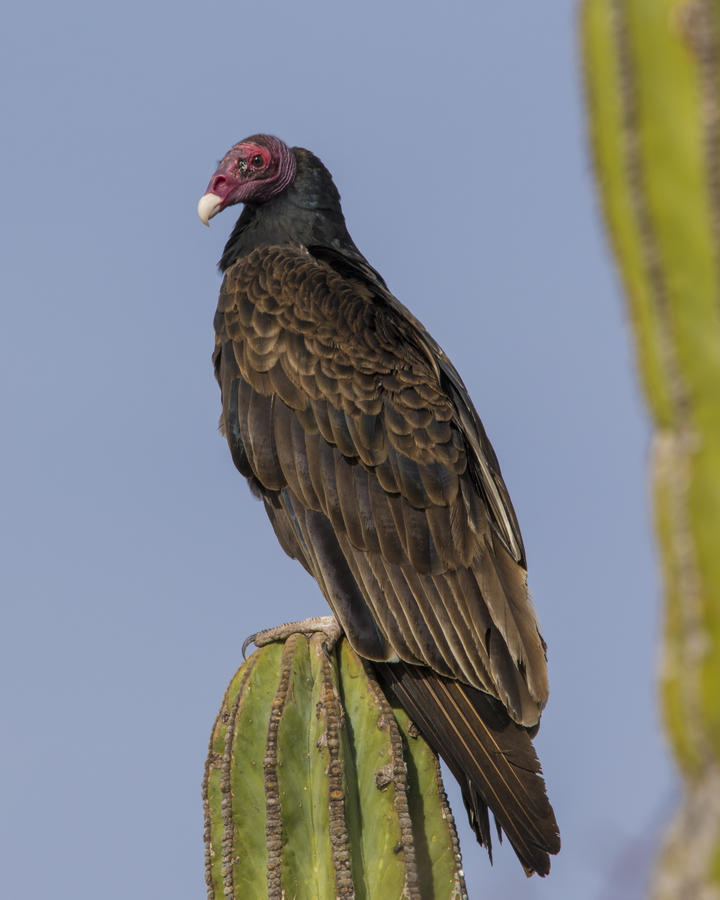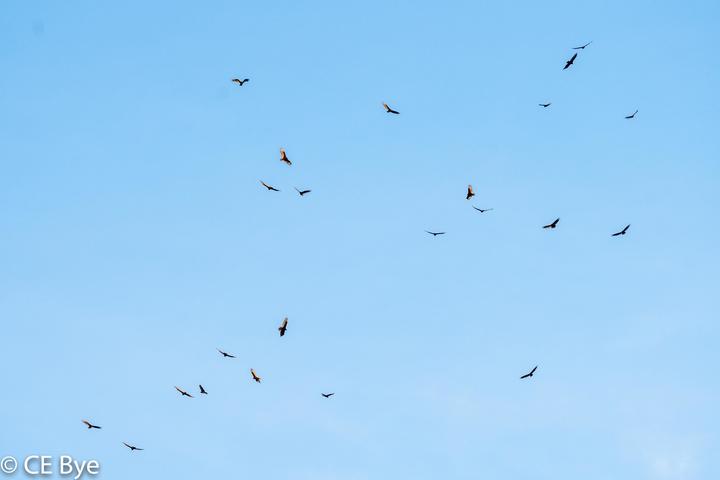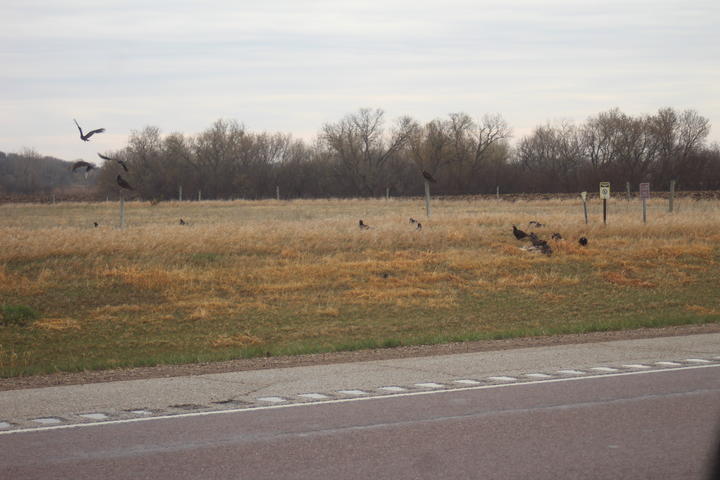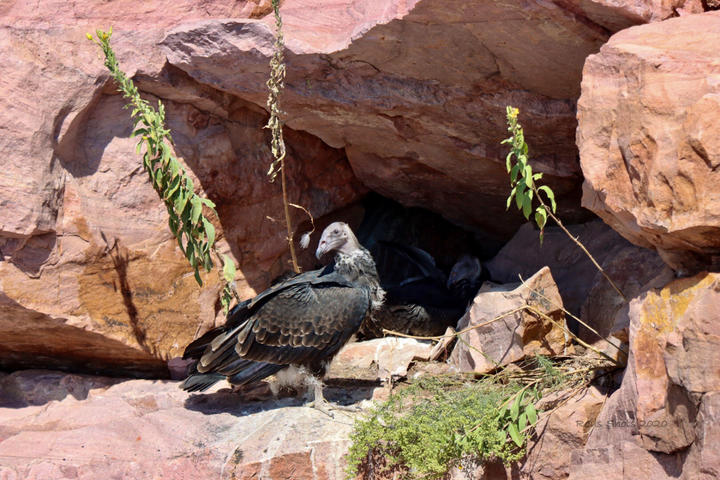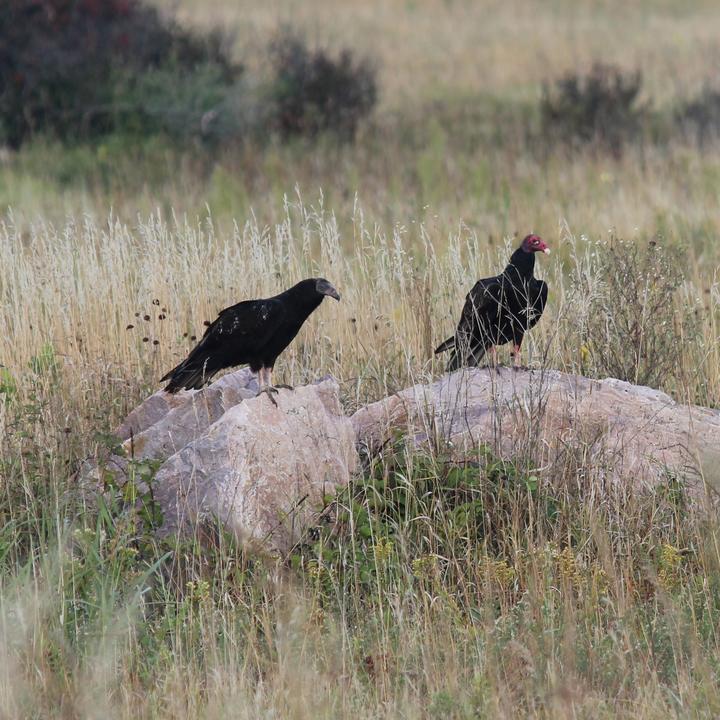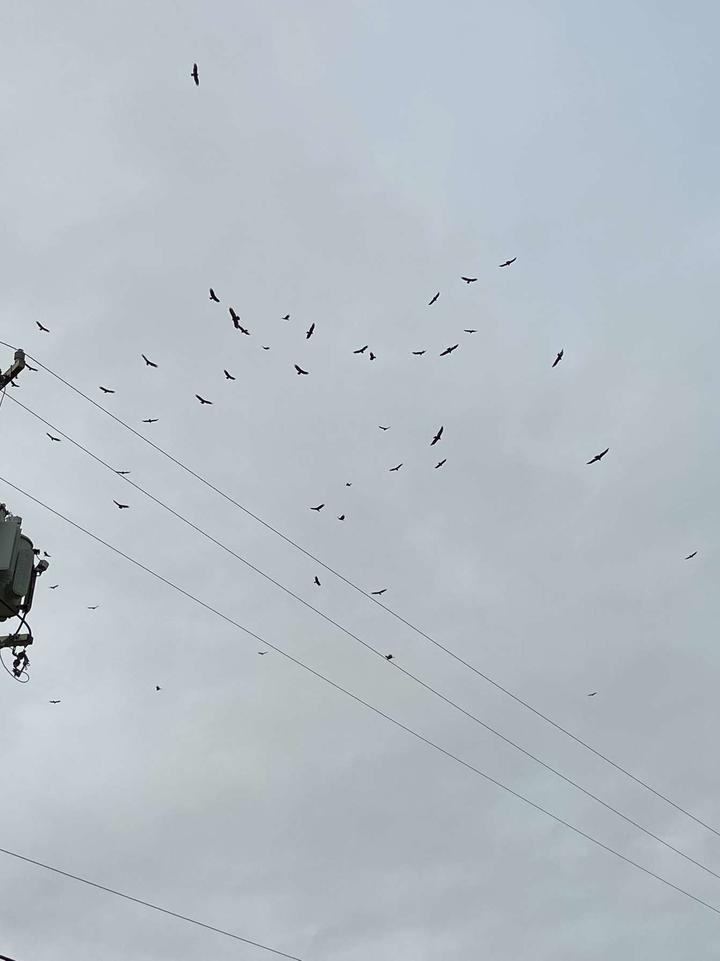More names for this bird
Anishinaabemowin: Wiinaange
The Dakota and Anishinaabe were among the earliest people to name Minnesota’s plants and animals, as well as to understand them in relation to Minnesota’s climate and seasons. Those original names are still in use, and several are included on the Season Watch website. However, complete translations were not available.
Latin (or scientific name): Cathartes aura
The scientific community has a convention of assigning agreed-upon Latin names to every kind of organism. Using scientific names helps people communicate confidently about the same organism and organize lifeforms based on how closely related they are.
Page contents
About the turkey vulture
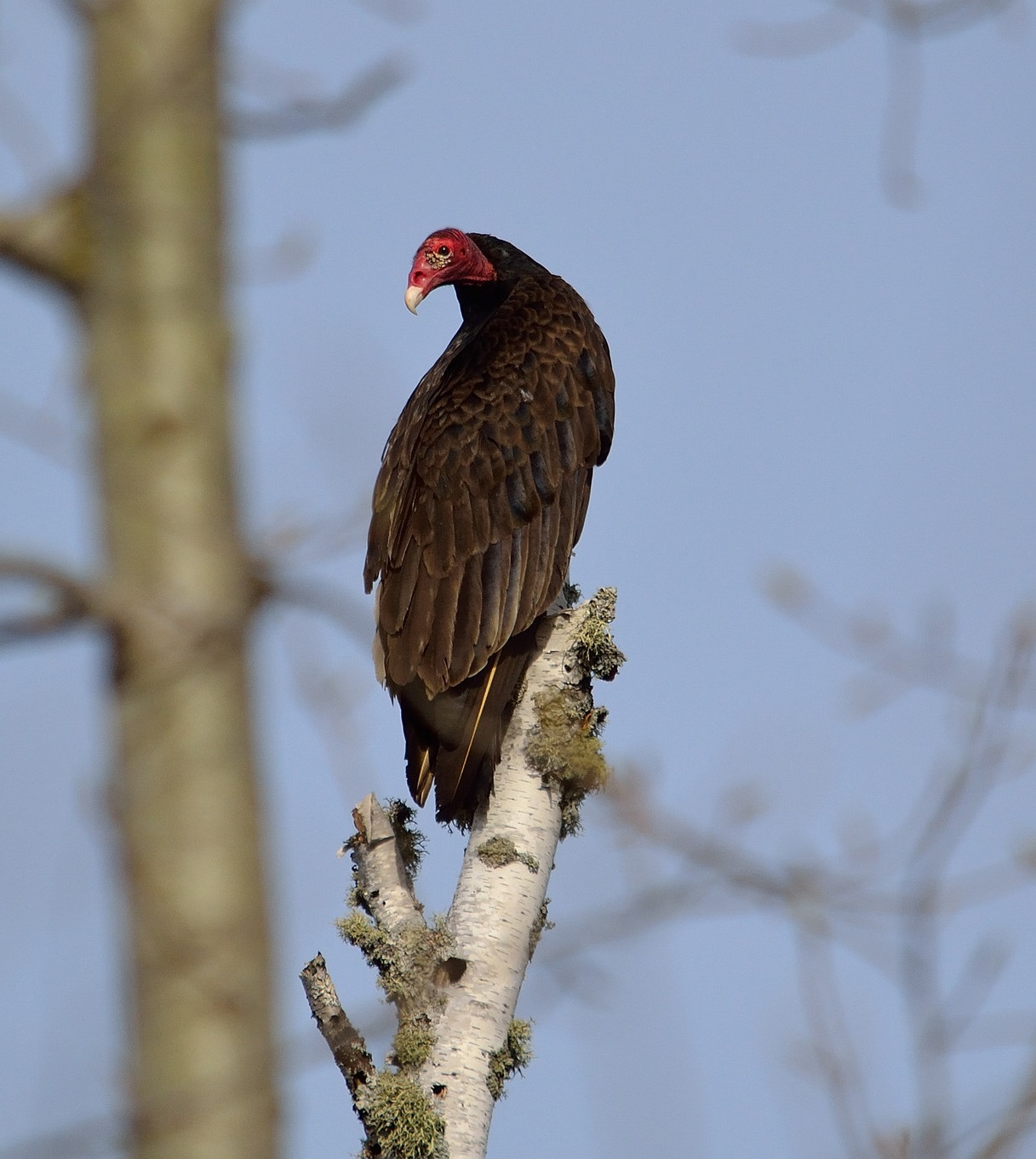
May 19, 2017, Lake County, Minnesota
Photo © Nathan Cross, some rights reserved (CC-BY-NC)
iNaturalist observation
About the turkey vulture
- Turkey vultures are large, black birds with a wingspan up to a six feet. The skin on their featherless heads is bright red on adult birds.
- Turkey vultures feed primarily on dead animals.
- Female turkey vultures lay two eggs in a clutch. Both parents incubate the eggs, which hatch after twenty-eight to forty-one days.
- Fun fact: Turkey vultures are said to “wobble” in flight and hold their wings in a distinctive “V” shape. This can help distinguish turkey vultures from eagles and hawks in flight.
- Turkey vultures migrate. Expand the "Migration animation" section below to learn more.
Migration animation
Migration animation
Click the full-frame icon (lower right corner of video) to play at full size.
More about eBird's abundance animations
eBird data from 2006-2020. Estimated for 2020. Fink, D., T. Auer, A. Johnston, M. Strimas-Mackey, O. Robinson, S. Ligocki, W. Hochachka, L. Jaromczyk, C. Wood, I. Davies, M. Iliff, L. Seitz. 2021. eBird Status and Trends, Data Version: 2020; Released: 2021. Cornell Lab of Ornithology, Ithaca, New York. https://doi.org/10.2173/ebirdst.2020
Visual guide to phenology
Watch for changes in turkey vultures' presence (or absence), abundance, and behaviors at different times of year. Also, pay attention to when young-of-year appear and develop.
Note to observers
This page explains general clues to watch for when observing turkey vulture phenology. However, this page does not explain how to identify this bird or collect data in a standardized way.
- For help with identification, see The Cornell Lab's All About Birds.
- For guidance on collecting data, see Nature’s Notebook.
Graphs and historical data
Note: The Orientation Center provides a map, as well as information on reading graphs; interpreting summary statistics, who collected the data and how; and how to download datasets for independent exploration.
First seen
- Earliest: March 31 (occurred in 2010)
- Average: April 8
- Latest: April 22 (occurred in 2013)
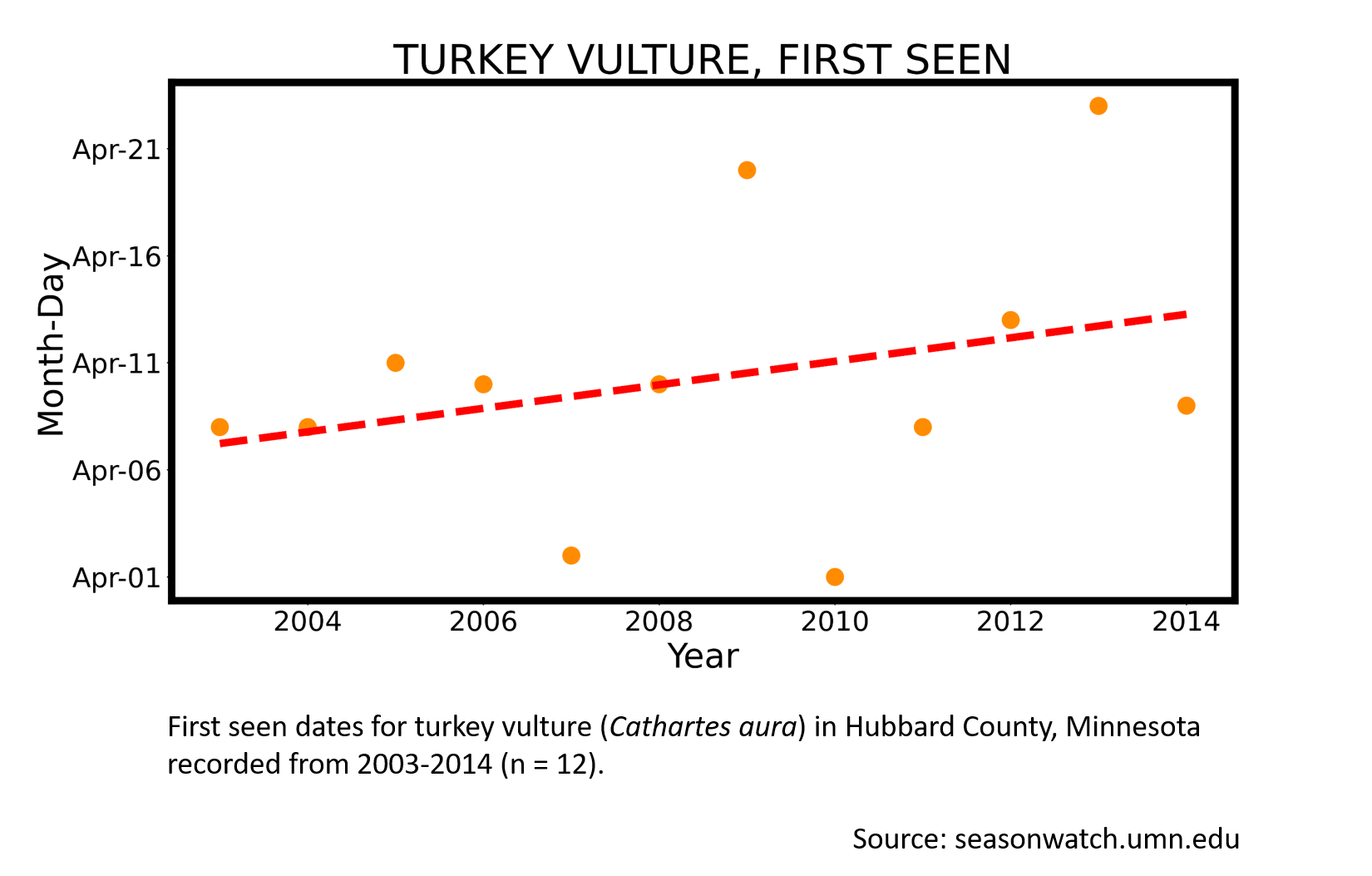
Arrival
- Earliest: March 8 (occurred in 1995)
- Average: April 5
- Latest: May 14 (occurred in 1998)
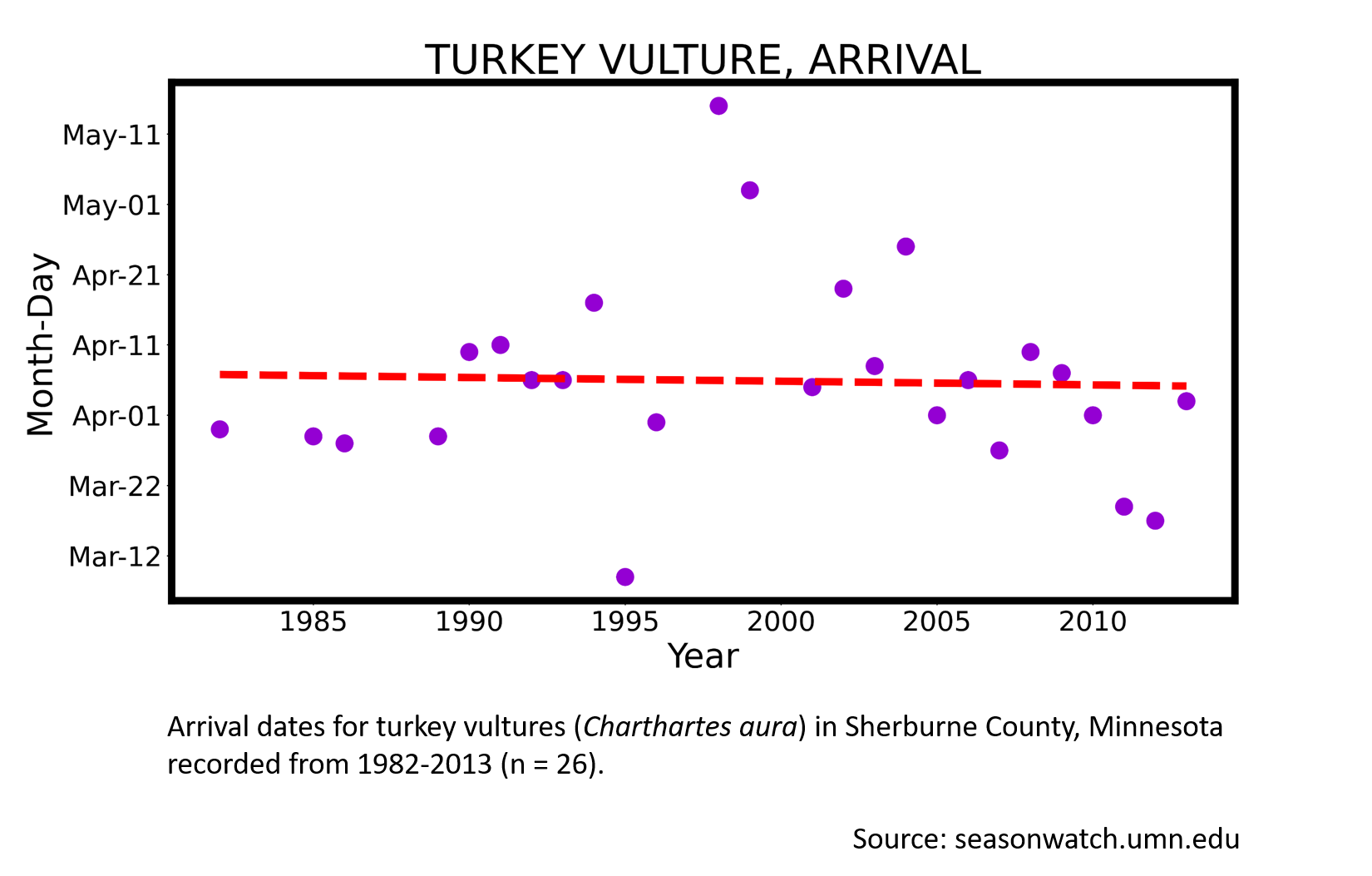
More resources
Keep exploring Season Watch
Keep exploring Season Watch
Co-author: Audrey Negro, Minnesota Master Naturalist
